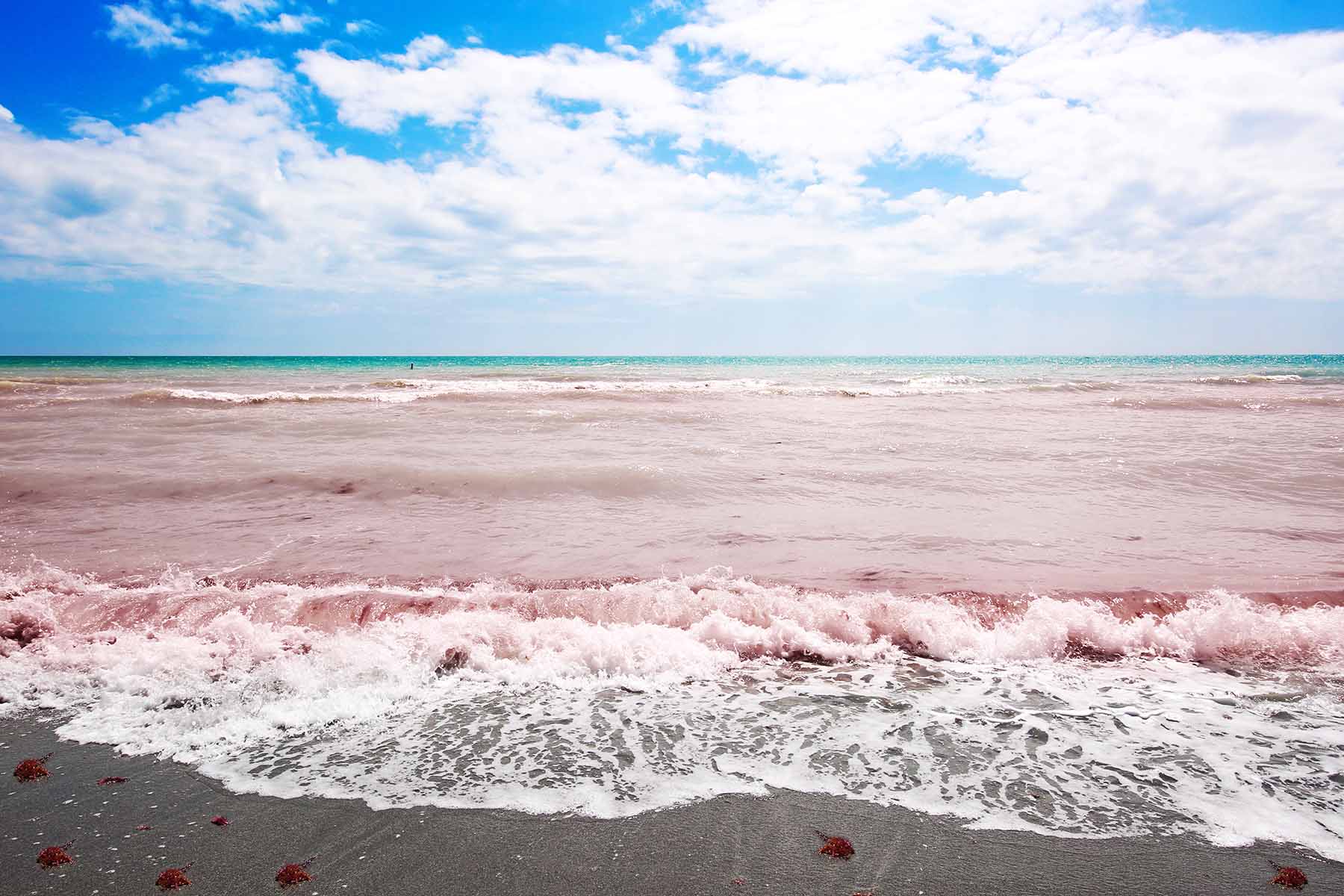Red Tide: What You Need to Know

If you live in South Florida, you have heard about the menace that is closing local beaches – red tide. This harmful algae bloom (HAB) has caused some beaches to close in the area due to potential health concerns. But many people don’t know what they are or how they may make people sick.
What is red tide?
According to the Florida Fish and Wildlife Conservation Commission, red tide is a plant like micro-organism whose scientific name is Karenia brevis. The reason why it is labeled “red tide” is because the blooms turn the water a reddish color in high enough concentration.
Why is it harmful?
“The blooms produce brevetoxin that rise to the surface of marine water and then gets blown onto shore by the wind,” explains Wendy Blair Stephan, Health Education Coordinator with the Florida Poison Information Center in Miami. “Some people become ill when they come into contact with these toxins.”
What symptoms do people have when they come into contact with red tide?
Dr. Eliana Mendes, a physician with the University of Miami Health System, says that it can “cause respiratory symptoms like chest tightness, cough, running nose and shortness of breath, especially if you have some previous respiratory disease as asthma.”
“Ingestion of contaminated food with brevetoxin (seaf ood) could cause neurologic symptoms since K. Brevis is neurotoxic in high concentration and ingestion of contaminated water with moderate/high brevetoxin could cause diarrhea or nausea,” she adds. “These symptoms are not permanent and should improve after a few days.”
“Shellfish beds in affected areas are closed during a red tide, so no commercially available seafood should be affected,” says Stephan.
Is anyone at a higher risk?
According to Dr. Mendes, asthmatic patients, and patients with other respiratory diseases or allergic rhinitis are more susceptible. These people should make sure to have their inhaler or other medication with them, consider wearing a face mask or avoid the beach until there is a lower cell count reported.
Stephan adds that people who work on the beach like lifeguards may be more likely to have symptoms due to their being exposed for longer.
Should people stay out of the water?
“People will need to make their own judgments,” says Stephan. “If people are particularly sensitive to allergens or have asthma, it may be best to avoid the beach.”
The Florida Fish and Wildlife Conservation Commission recently began publishing a daily map and status that shows which beaches are experiencing red tide. Dr. Mendes advises people who are concerned to use this resource to help them decide.
What should you do if you think you may be experiencing symptoms?
The Florida Department of Health website advises people to get out of the water and rinse off immediately. If you are not in the water and have a respiratory symptom, leaving the beach area and going somewhere with air conditioning like your car or a building should relieve symptoms.
Stephan urges people to call the Poison Control Hotline if they have concerns. “We have a medical staff here that can advise people what to do based on their symptoms and medical history,” she says. “This also helps us track where people are being affected by red tide from a public health perspective.”
If you think you may be experiencing symptoms due to contact with red tide, call the poison control center at UM/Jackson by calling 1-800-222-1222. Poison specialists are available 24 hours a day. If you are having trouble breathing or any other medical emergency, call 911.
Read more about red tide HERE.
By Natasha Bright, contributing writer.
